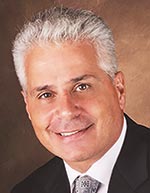Opinion: The Hidden Cost of Extended Idling
This Opinion piece appears in the Jan. 9 print edition of Transport Topics.
By Paul Nazzaro
Founder and President
Advanced Fuel Solutions Inc.
You don’t have to be a diesel mechanic to know that extended idling is bad for business. Frequent or prolonged idling increases emissions, wastes fuel and puts unnecessary wear on your engine. That’s why, due in large part to increasingly strict emissions standards, the trucking industry has seen a dramatic increase in idle-reduction technologies.

But what about those who can’t avoid idling? What’s the answer for urban and vocational fleets — municipal buses and garbage trucks, et al. — that are frequent idlers due to the very nature of their work? That’s where things get a little more technical.
Aside from the obvious waste and wear associated with idling, one of the biggest disadvantages facing an idling vehicle has to do with its lowered exhaust gas temperature, or EGT. To understand why this is important, let’s first look at the effects of higher EGTs in nonidling vehicles.
EGT in Nonidling Vehicles
In a rural highway-driving truck, for example, the engine output required to sustain long periods of uninterrupted driving generates more heat in the combustion chamber, and thus yields a higher EGT. While extreme EGTs (1,400 degrees Fahrenheit or hotter) caused by excessive engine strain should always be avoided, the appropriate EGT achieved by the truck in this scenario (about 1,200 degrees Fahrenheit) will burn off much of the soot left over from the combustion process before it reaches the diesel particulate filter downstream in the exhaust system.
The DPF, which is standard on all modern diesel trucks, is designed to capture any remaining soot in the vehicle’s exhaust before it’s released into the air we breathe. After the DPF fills up, the soot then needs to be combusted to clear, or “regenerate” the filter and maintain engine performance.
This regeneration process, commonly known as “regen,” requires an EGT of 1,000 to 1,100 degrees Fahrenheit to combust the soot, which is then expelled through the exhaust pipe as nitrogen gas and carbon dioxide. For most highway-driving vehicles, the EGT required for regeneration is created naturally under normal operating conditions, and a “passive” regen occurs automatically without any driver intervention.
EGT in Idling Vehicles
Now let’s look at what happens in idling vehicles. An urban delivery truck, for example, which travels at low speeds and idles frequently because of high traffic density, generates less heat in the combustion chamber, increasing the likelihood of soot and unburned particulate matter entering the exhaust system. Not only is more soot present in the exhaust, but because of the lower EGT, less of that soot is burned off before it reaches the DPF, ultimately necessitating more regens. And because the EGT isn’t naturally high enough to passively combust the soot, an “active” regeneration is the only way to clear the filter.
During an active regen, fuel is injected into the exhaust upstream of the DPF to raise the EGT high enough to burn off the soot in the filter. An active regen is triggered automatically by backpressure created by soot buildup in the DPF. The process can take anywhere from 20 to 60 minutes, consuming up to a half-gallon of fuel, and can occur only while the truck is moving.
Because the regen will stop if the driver stops the vehicle, a truck driving in a congested urban area can either get to a highway to initiate an active regen (or drive until the EGT is high enough for a passive regen) or perform a parked regen.
A parked regen is essentially the same as an active regen while moving but requires more fuel in the exhaust stream to achieve the necessary EGT. Whether the truck gets on a highway to regenerate the DPF or performs a parked regen, both processes result in increased downtime and fuel spend.
In short, a high-idling vehicle wastes fuel not only in the act of idling but also in the act of regenerating its DPF — which can require excess driving or pulling off the road for 30 minutes or more. If this is happening several times a day to several vehicles within a fleet, you can imagine how quickly it adds up. So how to minimize the cost of wasted fuel and time? The answer is not as complicated as you might think.
Reducing Regens
Because a regen is required when too much particulate matter builds up in the DPF, the key to minimizing the frequency of regens is in reducing particulate matter in the exhaust. Modern ultra-low-sulfur diesel, while certainly cleaner than traditional diesel, is less thermally stable, which causes it to break down more readily into soot when introduced into today’s high-pressure fuel-injection equipment.
By treating ULSD with a thermal stabilizer, however, the fuel becomes less susceptible to thermal decomposition, reducing soot. To further minimize particulate matter in the exhaust, one should maintain a clean fuel system by using a diesel detergent, antifoulant chemistry and a corrosion inhibitor to prevent filter-plugging carbon deposits from forming and to keep injectors and other engine components in peak operating condition.
Not only will a multifunctional treatment package reduce regens while idling, but it will improve horsepower and fuel economy while driving, increase your service interval duration, reduce repair costs and associated downtime, and extend the life of your engine.
Advanced Fuel Solutions Inc. provides fuel quality solutions, fuel additives, fleet management and consulting services that include fuel additive testing.

